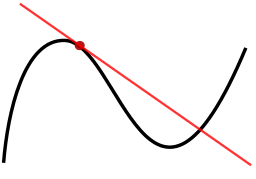
Contents:
What is a Particular Solution?
Find particular solution: Example
What is a Particular Solution?
A particular solution requires you to find a single solution that meets the constraints of the question. A problem that asks you to find a series of functions has a general solution as the answer—a solution that contains a constant (+ C), which could represent one of a possibly infinite number of functions.
For example, a problem with the differential equation
dy⁄dv x3 + 8
requires a general solution with a constant for the answer, while the differential equation
dy⁄dv x3 + 8; f(0) = 2
requires a particular solution, one that fits the constraint f(0) = 2.
Watch this 5 minute video showing the difference between particular and general, or read on below for how to find particular solution differential equations.
Find Particular solution: Example
Example problem #1: Find the particular solution for the differential equation dy⁄dx = 5, where y(0) = 2.
Step 1: Rewrite the equation using algebra to move dx to the right (this step makes integration possible):
- dy = 5 dx
Step 2: Integrate both sides of the equation to get the general solution differential equation. Need to brush up on the rules? See: Common integration rules.
- ∫ dy = ∫ 5 dx →
- ∫ 1 dy = ∫ 5 dx →
- y = 5x + C
Step 3: Rewrite the general equation to satisfy the initial condition, which stated that when x = 0, y = 2:
- 2 = 5(0) + C
- C = 2
The differential equation particular solution is y = 5x + 2
Particular solution differential equations, Example problem #2:
Find the particular solution for the differential equation dy⁄dx= 18x, where y(5) = 230.
Step 1: Rewrite the equation using algebra to move dx to the right:
- dy = 18x dx
Step 2: Integrate both sides of the equation:
- ∫ dy = ∫ 18x dx →
- ∫ 1 dy = ∫ 18x dx →
- y = 9x2 + C
Step 3: Rewrite the general equation to satisfy the initial condition, which stated that when x = 5, y = 230:
- 230 = 9(5)2 + C
- C = 5
The differential equation particular solution is y = 5x + 5
That’s it!
References
4.5 The Superposition Principle and Undetermined Coefficients Revisited.